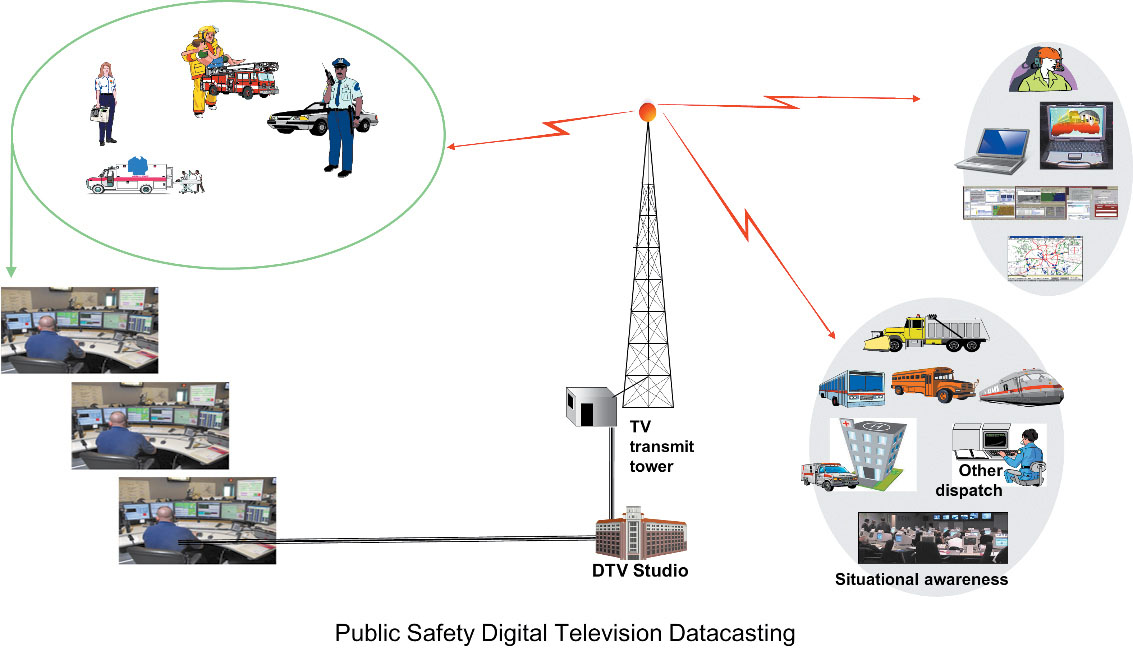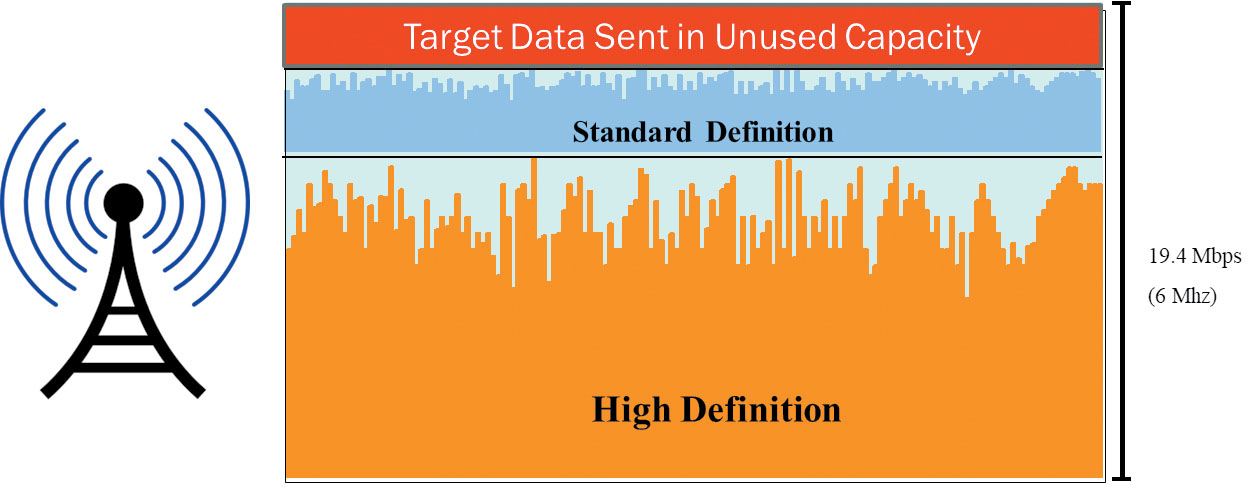How Can AI Enhance Public Safety Datacasting?
CHANTILLY, Va.—I’ve spent the bulk of my career immersed in television technology—spanning satellites, cable, broadcast and internet. Recently, I’ve been focused on “crossing the streams” between television technology and public safety—specifically by exploiting the unique characteristics of digital television datacasting to support public safety, first responders and public alerting.

Public safety entities, who have historically depended on land-mobile radio (LMR) technology for communications, have been stymied by the limitations of those services. They are generally voice-only services with limited geographic footprints. 4G/LTE mobile services can offer increased functionality but are hampered by the limitations of wireless coverage, dependence on commercial power and congestion during public safety incidents—often making them unusable precisely at the times they are needed the most.
Datacasting utilizes a dedicated portion of broadcast television bandwidth to provide secure, targeted IP data delivery, including alerts, messages, files, images and video. Data is encoded, encrypted (when desired) and multiplexed with other program streams into the digital television broadcast signal. It is only receivable on targeted devices and is undetectable on television viewed by the public. Because it uses the resilient TV station infrastructure, datacasting is highly reliable, especially during emergencies (Fig. 1).

SIGNIFICANT BENEFITS
Datacasting has the potential to provide significant benefits when used to support public safety.
Broadcast television signals are widely available in urban, suburban and rural areas, so datacasting coverage is extensive. Public television transmitters alone reach nearly 97 percent of the U.S. population, including territories.
Because datacasting uses existing broadcast television infrastructure, it is highly reliable and resilient. Broadcast television has a proven track record of staying on the air even during severe weather events and extended power outages, as demonstrated during Super-storm Sandy and Hurricanes Harvey and Irma.
Datacasting is not subject to congestion during emergencies. The licensed television spectrum is controlled by the television station licensee and staffed by professional engineers. When they allocate bandwidth to public safety, the same quality of service will always be available.
Datacasting can be used to multicast data to many users for the same cost as the transmission of data to a single user. Datacasting can make more efficient use of available bandwidth and reduce the load on LTE bandwidth, freeing that spectrum up for other uses.
Datacasting leverages a system designed primarily for the transmission of high-quality video and audio streams. Thus, it has the innate ability to address the public safety community’s desire for high quality audio and video data transport.
Television stations are designed as a communications hub, where fiber, satellite, microwave and LTE carrier aggregation allow for content aggregation from a remote command, state or national government agency, and distribution over a local TV station for last mile delivery.
Datacasting is relatively inexpensive to implement and operate. The bulk of the network operating costs are already covered under a station’s broadcast service model. Incorporating datacasting into a comprehensive communications plan leverages this sunk cost making datacasting very cost effective.
Datacasting provides an alternative communications path to the existing cellular system, which cannot easily handle large files and video and provides a redundant communications path in times of emergency when the cellular systems become congested and non-functional.
Datacasting improves interoperability and the ability to share critical files and videos between agencies and metropolitan regions.
A conceptualized digital television signal is shown in Fig. 2. In this simplified example, the station is transmitting one HD channel (shown in orange), and one SD channel (shown in blue), and has allocated a fixed minimum amount of their digital capacity to datacasting (shown in red). The digital capacity required for the two television signals varies in time, based on the complexity of the video.

So, there is often unused transmission capacity that can be used opportunistically for datacasting in addition to the minimum capacity set aside. Small content elements, for example, alert messages, take very little transmission capacity and can be transmitted very quickly. Larger content elements, for example, a live drone video feed, are best served through dedicated capacity. In extreme circumstances, a station also has the option to preempt or reduce quality on one or more video services to free up capacity for high-demand content.
LEVERAGING AI AND MACHINE LEARNING
So, what is one of the biggest challenges? Identifying and selecting the most appropriate and useful content to send to first responders. Think about a public safety datacasting system that supports all first responders in a station’s entire broadcast footprint. That might include state and local police, emergency management teams, fire services, school districts, public venues, corrections departments, state national guard and others. Today there are literally thousands of video sources in every community that are useful in supporting public safety incidents within just a single station’s footprint. Examples include police and national guard helicopter video, UAV drone video from wildfire incidents, traffic cameras, security cameras (from schools, sports arenas, correctional facilities, etc.), body cameras and hand-held cellphone video.
Traditionally we’ve had a dispatcher making human choices about which video sources are the most important to datacast and target to specific public safety entities and first responders; however, that model is reaching its limits due to the raw number of potential sources. It’s a phenomenon that psychologist Barry Schwartz describes as “The Paradox of Choice” in his book of the same name. There are so many choices that the opportunities that should be liberating us instead are overwhelming us and making it more difficult for us to actually make choices.
This is where the media & entertainment and public safety industry efforts around AI and machine learning are offering solutions to this choice dilemma. On the M&E side, work focused on content cataloging, automated analysis and metadata enrichment are helping to simplify and streamline the selection process. On the public safety side, work focused on human behavior analysis, facial recognition, event access control and deep learning are equally applicable to source selection for public safety datacasting.
Our plan is to leverage the ongoing work in both industries to help solve this real-world and growing challenge. The onset of Next Gen TV greatly enhances the capacity and opportunities for public safety datacasting. Coupling that with advanced approaches to content selection and curation will solidify broadcast television’s role in supporting public safety in our communities.
John McCoskey is chief operating officer for SpectraRep. He can be reached atjmccoskey@spectrarep.com. Follow him on Twitter at @John_McCoskey.
Get the TV Tech Newsletter
The professional video industry's #1 source for news, trends and product and tech information. Sign up below.
